Chinon -
Loire Valley
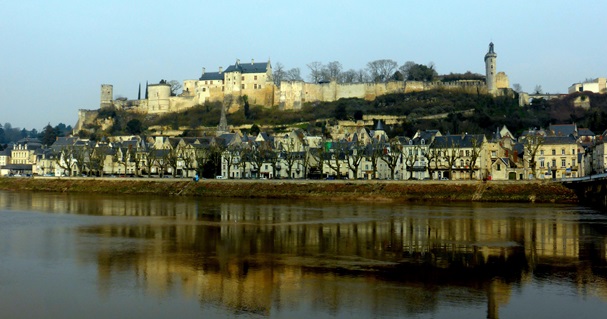
Hotels in Chinon
The medieval town of Chinon is located in the
Centre - Val de Loire
region of France,
resting by the banks of the majestic
Vienne
river just before it meets the mighty
Loire. It is a town steeped in
history and rich with
culture,
the ancient château was the preferred residence of Henry II,
one of the English Plantagenet kings, and his wife
Aliénor (Eleanor)
d'Aquitaine. Henry II died here in 1189 and their
son, Richard The
Lionheart was born here. Henry
is interred at the side of Aliénor
at the beautiful abbey of Fontevraud,
a few kilometres to the west of Chinon,
near Saumur and the confluence of the River
Vienne with the
Loire.
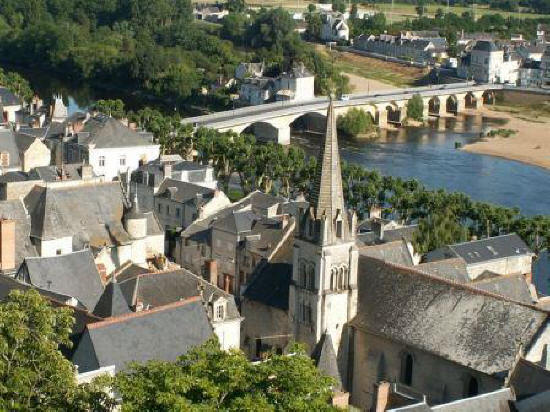
In Chinon the winding streets
up to the castle are lined with small
shops, inns, and
cafes. The cobbles and timber houses dating back to the fifteenth
century give you a feel of its history .The tourist
office will provide a walking tour map of the main tourist attractions,
including churches. As you take the well worn path do not be afraid to
wander slightly so as to see some of the hidden courtyards and gardens
along the way.
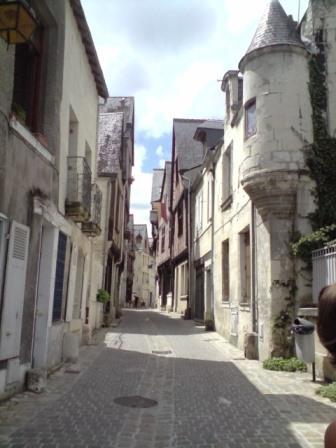
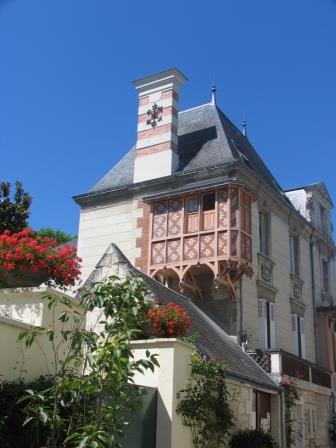
The historic town of Chinon was registered as a
preservation area in 1968 and since then has been undergoing
continuous restoration work in order to respect
and preserve its historic and architectural identity. You can easily
walk through the town in a day and discover some pleasant surprises on
your own or take the guided tour arranged through the Tourist Office.
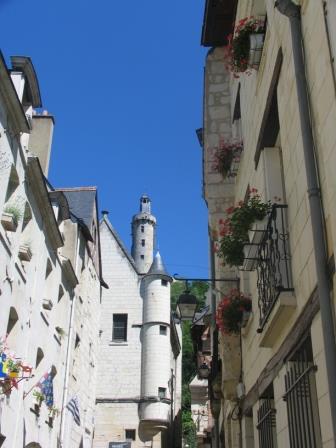
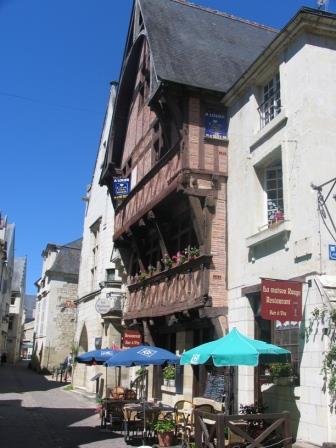
It is a town well worth a visit to browse the many
shops or to lunch at one of its fine restaurants as well as view the
mighty fortress.

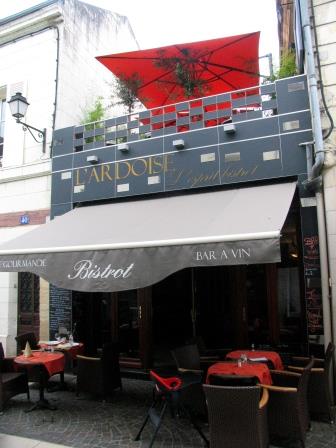
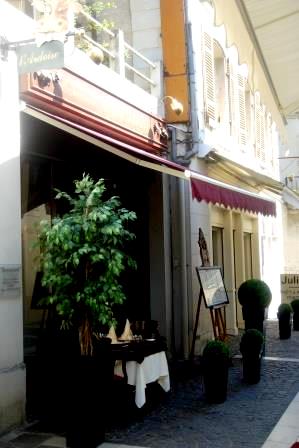
There are a number of restaurants around
place General de Gaulle
from
where you can access the car park and the elevator that
saves you much of the climb up to the chateau.
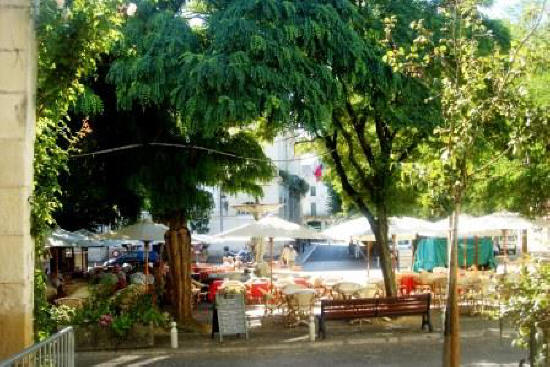
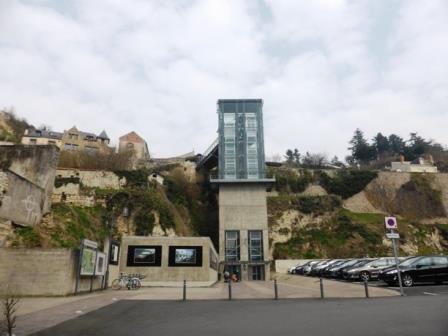
In 1429 the
teenage Joan of Arc came to Chinon
to meet the Dauphin Charles VII, who was holed up after
losing most of his kingdom. Joan succeeded in inspiring
Charles to reclaim his kingdom, after which
Chinon became his capital and
enjoyed a century of prosperity. She has been immortalised
in bronze by Jules Roulleau here in the square bearing her
name since 1893.
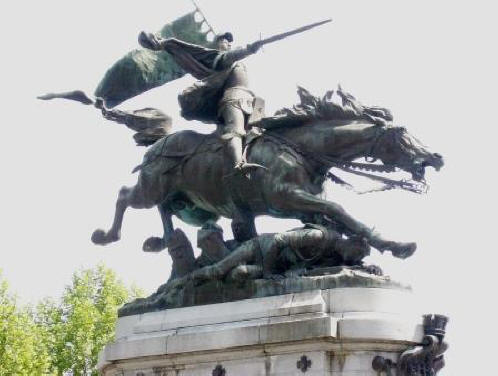
By the 16th century Chinon
was no longer in favour with French Royals and in 1631 it became part of
the Duke of Richelieu's estate, entering into a period of decline.
Richelieu had the chateau razed as he did not want anything
competing with his splendid abode, (such an ego!) and the plundered
stone was used to help build the town of Richelieu.
Apart from the townhouses and
convents that were built, the city changed little up to the Revolution
when religious buildings fell into neglect. The fortifications were
pulled down in the 1820s and the banks of the Vienne were developed to
open the city up to the outside.
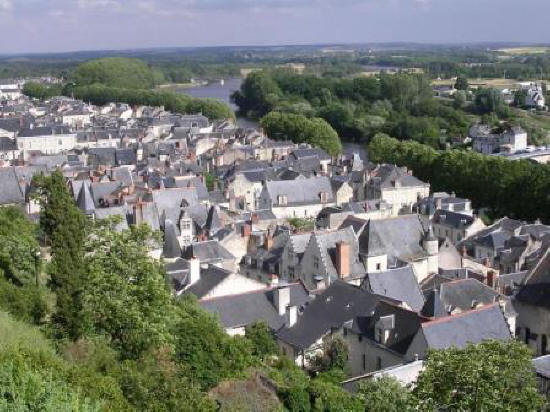
Along the
streets below the castle walls are Troglodyte dwellings, some
occupied and many used by wine merchants for the sale of wine.
Chinon is one of the better known wine producing towns of the Loire,
it welcomes visitors to its 'caves' where you can taste some of its
fine wines, its red wine are highly rated.
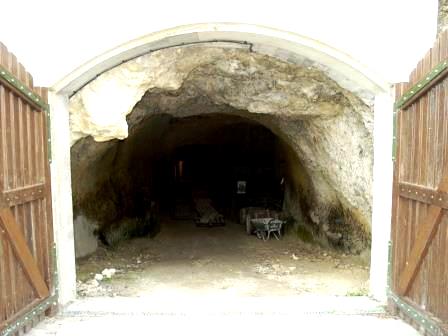
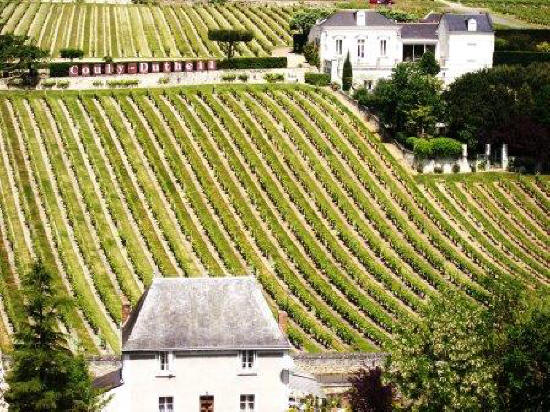
The Chateau de
Chinon is open daily throughout the year,
hours 9-6 in April-June and Sept., 9-7 in July-Aug., 9-5 in Oct., and
9-12 and 2-5 in Nov.-March.
There is weekly market here on
Sundays (morning) plus a monthly antique market
(brocante)
in the town on the third Sunday of the month.
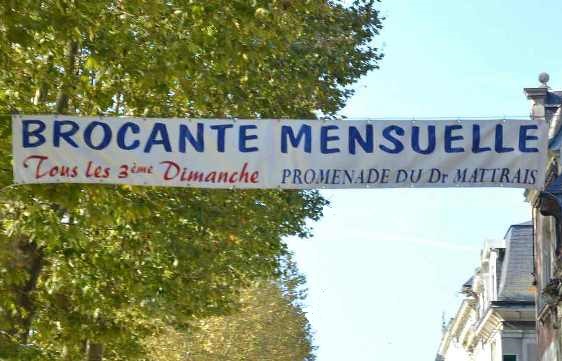
experienceloire.blogspot.fr/a-visit-to-monthly-chinon-brocante
Chateau de Chinon
Directions and time to Chinon
Back to top.
|

